But, Thank God I was wrong. What I didn't understand is just how much the rest of the world was grateful to the U.S. for saving them during and after World War II by loaning them money, food and goods. So instead of our government collapsing other nations loaned us money and kept us solvent at that time.
We are going to be okay this time I believe for different reasons. we are going to be okay this time too.
begin quote from:
- Demand for designer bunkers has grown rapidly in recent years
- High-end amenities ensure the world's wealthy will see out the apocalypse
How the 1% are preparing for the apocalypse
Billionaire bunkers: How the 1% are preparing for the apocalypse

Photos: Inside the world's most luxurious doomsday dugouts
Survival Condo, Kansas – Designed
to serve as a "luxury second home" that's also a nuclear-hardened
bunker, Hall's company provides military-level security, on top of the
protection provided by the facility's 9-foot thick walls and 161-foot
protective dome. Each unit also comes with a five-year supply of food
for each resident.
Hide Caption
11 of 19

Photos: Inside the world's most luxurious doomsday dugouts
Safe House, Poland – This
two-story concrete house, designed by KWK Promes, in Warsaw, Poland,
offers maximum security with movable walls, providing a safety zone.
Hide Caption
12 of 19

Photos: Inside the world's most luxurious doomsday dugouts
Safe House, Poland – The
2.8-meter high mobile shutters open up to 180 degrees and a roll-down
gate, made of white anodized aluminum, can also function as a projection
screen.
Hide Caption
13 of 19

Photos: Inside the world's most luxurious doomsday dugouts
Safe House, Poland – The thick outer walls, together with its hybrid heat system, accumulate energy during the day and at night.
Hide Caption
14 of 19

Photos: Inside the world's most luxurious doomsday dugouts
The Genesis – Colorado-based
architecture firm F9 Productions devised a series of homes, called
DoomsDay Dwellings, that are meant to stand up to various disasters. The
Genesis House is lowered into the ground on a hydraulic pump and
covered with a blast resistant cap.
Hide Caption
15 of 19

Photos: Inside the world's most luxurious doomsday dugouts
The Aristocrat – Rising
S Company, a manufacturer of safe rooms, storm shelters, and steel
underground bunkers, offers several high-end models, including the
Aristocrat, which is priced at $8.35 million. The design incorporates a
games room, bowling alley, gun range, garage and a pool.
Hide Caption
16 of 19

Photos: Inside the world's most luxurious doomsday dugouts
The Coloradoan – Named
after Colorado, known for frequent forest fires, The Coloradoan's
defense systems include Fire Walls, Defensible Space and Double Fire
Resistant Vents. Exterior walls made of an insulated concrete core can
stand high temperature of up to 1,177 degrees.
Hide Caption
17 of 19

Photos: Inside the world's most luxurious doomsday dugouts
Trident Lakes, Texas – Currently
being built in Fannin County, Texas, by Vintuary Holdings, Trident
Lakes is part country club and part survival community. It will offer
condos that are 90% earth sheltered with above ground amenities, such as
a golf course, equestrian center and lagoons. The subterranean
offerings include communal greenhouses and a DNA vault.
Hide Caption
18 of 19

Photos: Inside the world's most luxurious doomsday dugouts
Silo Home, New York – The Silo Home is located above a former missile storage facility.
Hide Caption
19 of 19

Photos: Inside the world's most luxurious doomsday dugouts
The Oppidum, Czech Republic – The demand for designer bunkers has grown rapidly in recent years.
Hide Caption
1 of 19

Photos: Inside the world's most luxurious doomsday dugouts
The Oppidum, Czech Republic – The Oppidum in the Czech Republic is being billed as "the largest billionaire bunker in the world."
Hide Caption
2 of 19

Photos: Inside the world's most luxurious doomsday dugouts
The Oppidum, Czech Republic – Planned amenities include a pool and an underground garden that features simulated natural light.
Hide Caption
3 of 19

Photos: Inside the world's most luxurious doomsday dugouts
The Oppidum, Czech Republic – The
top-secret facility, once a joint project between the former Soviet
Union and Czechoslovakia (now the Czech Republic and Slovakia), was
built over 10 years beginning in 1984.
Hide Caption
4 of 19

Photos: Inside the world's most luxurious doomsday dugouts
Vivos Europa One, Germany – This
luxury shelter, billed as a "modern day Noah's Ark," is built beneath a
400-foot tall mountain and offers 227,904 square feet of living space.
Converted from a Cold War-era munitions storage facility, these
individual residences can be customized with a private pool, a theater
and a gym.
Hide Caption
5 of 19

Photos: Inside the world's most luxurious doomsday dugouts
Vivos xPoint, South Dakota – The Vivos xPoint bunkers are located in South Dakota, They are currently being converted to accommodate about 5,000 people.
Hide Caption
6 of 19

Photos: Inside the world's most luxurious doomsday dugouts
Vivos xPoint, South Dakota – There are 575 bunkers in the works, and each bunker once served as an Army Munitions Depot.
Hide Caption
7 of 19

Photos: Inside the world's most luxurious doomsday dugouts
Vivos xPoint, South Dakota – The interiors of each bunker are outfitted by the owners at a cost of between $25,000 to $200,000 each.
Hide Caption
8 of 19

Photos: Inside the world's most luxurious doomsday dugouts
Vivos xPoint, South Dakota – Each residence can be customized with high-end finishes like LED screens that give the illusion of skylights and windows.
Hide Caption
9 of 19

Photos: Inside the world's most luxurious doomsday dugouts
Survival Condo, Kansas – Developer
Larry Hall transformed this abandoned Atlas missile silo into luxury
condos. Each residence is equipped with stainless steel appliances, LED
lighting, washers and dryers and a home automation system. Owners also
have access to a pool, rock climbing wall, movie theater, dog park and
arcade.
Hide Caption
10 of 19

Photos: Inside the world's most luxurious doomsday dugouts
Survival Condo, Kansas – Designed
to serve as a "luxury second home" that's also a nuclear-hardened
bunker, Hall's company provides military-level security, on top of the
protection provided by the facility's 9-foot thick walls and 161-foot
protective dome. Each unit also comes with a five-year supply of food
for each resident.
Hide Caption
11 of 19

Photos: Inside the world's most luxurious doomsday dugouts
Safe House, Poland – This
two-story concrete house, designed by KWK Promes, in Warsaw, Poland,
offers maximum security with movable walls, providing a safety zone.
Hide Caption
12 of 19

Photos: Inside the world's most luxurious doomsday dugouts
Safe House, Poland – The
2.8-meter high mobile shutters open up to 180 degrees and a roll-down
gate, made of white anodized aluminum, can also function as a projection
screen.
Hide Caption
13 of 19

Photos: Inside the world's most luxurious doomsday dugouts
Safe House, Poland – The thick outer walls, together with its hybrid heat system, accumulate energy during the day and at night.
Hide Caption
14 of 19

Photos: Inside the world's most luxurious doomsday dugouts
The Genesis – Colorado-based
architecture firm F9 Productions devised a series of homes, called
DoomsDay Dwellings, that are meant to stand up to various disasters. The
Genesis House is lowered into the ground on a hydraulic pump and
covered with a blast resistant cap.
Hide Caption
15 of 19

Photos: Inside the world's most luxurious doomsday dugouts
The Aristocrat – Rising
S Company, a manufacturer of safe rooms, storm shelters, and steel
underground bunkers, offers several high-end models, including the
Aristocrat, which is priced at $8.35 million. The design incorporates a
games room, bowling alley, gun range, garage and a pool.
Hide Caption
16 of 19

Photos: Inside the world's most luxurious doomsday dugouts
The Coloradoan – Named
after Colorado, known for frequent forest fires, The Coloradoan's
defense systems include Fire Walls, Defensible Space and Double Fire
Resistant Vents. Exterior walls made of an insulated concrete core can
stand high temperature of up to 1,177 degrees.
Hide Caption
17 of 19

Photos: Inside the world's most luxurious doomsday dugouts
Trident Lakes, Texas – Currently
being built in Fannin County, Texas, by Vintuary Holdings, Trident
Lakes is part country club and part survival community. It will offer
condos that are 90% earth sheltered with above ground amenities, such as
a golf course, equestrian center and lagoons. The subterranean
offerings include communal greenhouses and a DNA vault.
Hide Caption
18 of 19

Photos: Inside the world's most luxurious doomsday dugouts
Silo Home, New York – The Silo Home is located above a former missile storage facility.
Hide Caption
19 of 19

Photos: Inside the world's most luxurious doomsday dugouts
The Oppidum, Czech Republic – The demand for designer bunkers has grown rapidly in recent years.
Hide Caption
1 of 19

Photos: Inside the world's most luxurious doomsday dugouts
The Oppidum, Czech Republic – The Oppidum in the Czech Republic is being billed as "the largest billionaire bunker in the world."
Hide Caption
2 of 19

Photos: Inside the world's most luxurious doomsday dugouts
The Oppidum, Czech Republic – Planned amenities include a pool and an underground garden that features simulated natural light.
Hide Caption
3 of 19

Photos: Inside the world's most luxurious doomsday dugouts
The Oppidum, Czech Republic – The
top-secret facility, once a joint project between the former Soviet
Union and Czechoslovakia (now the Czech Republic and Slovakia), was
built over 10 years beginning in 1984.
Hide Caption
4 of 19

Photos: Inside the world's most luxurious doomsday dugouts
Vivos Europa One, Germany – This
luxury shelter, billed as a "modern day Noah's Ark," is built beneath a
400-foot tall mountain and offers 227,904 square feet of living space.
Converted from a Cold War-era munitions storage facility, these
individual residences can be customized with a private pool, a theater
and a gym.
Hide Caption
5 of 19

Photos: Inside the world's most luxurious doomsday dugouts
Vivos xPoint, South Dakota – The Vivos xPoint bunkers are located in South Dakota, They are currently being converted to accommodate about 5,000 people.
Hide Caption
6 of 19

Photos: Inside the world's most luxurious doomsday dugouts
Vivos xPoint, South Dakota – There are 575 bunkers in the works, and each bunker once served as an Army Munitions Depot.
Hide Caption
7 of 19

Photos: Inside the world's most luxurious doomsday dugouts
Vivos xPoint, South Dakota – The interiors of each bunker are outfitted by the owners at a cost of between $25,000 to $200,000 each.
Hide Caption
8 of 19

Photos: Inside the world's most luxurious doomsday dugouts
Vivos xPoint, South Dakota – Each residence can be customized with high-end finishes like LED screens that give the illusion of skylights and windows.
Hide Caption
9 of 19

Photos: Inside the world's most luxurious doomsday dugouts
Survival Condo, Kansas – Developer
Larry Hall transformed this abandoned Atlas missile silo into luxury
condos. Each residence is equipped with stainless steel appliances, LED
lighting, washers and dryers and a home automation system. Owners also
have access to a pool, rock climbing wall, movie theater, dog park and
arcade.
Hide Caption
10 of 19





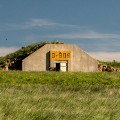
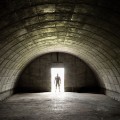


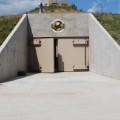
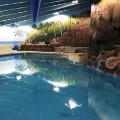

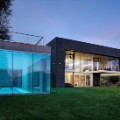
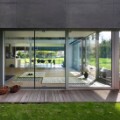
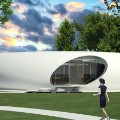
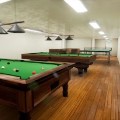

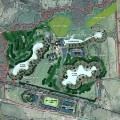
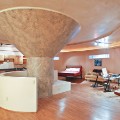
Story highlights
(CNN)Say "doomsday bunker" and most people would imagine a concrete room filled with cots and canned goods.
The
threat of global annihilation may feel as present as it did during the
Cold War, but today's high-security shelters could not be more different
from their 20th-century counterparts.
A
number of companies around the world are meeting a growing demand for
structures that protect from any risk, whether it's a global pandemic,
an asteroid, or World War III -- while also delivering luxurious
amenities.
"Your father or grandfather's bunker was not very comfortable," says Robert Vicino, a real estate entrepreneur and CEO of Vivos, a company he founded that builds and manages high-end shelters around the world.
"They
were gray. They were metal, like a ship or something military. And the
truth is mankind cannot survive long-term in such a Spartan, bleak
environment."
Doomsday demand
Many
of the world's elite, including hedge fund managers, sports stars and
tech executives (Bill Gates is rumored to have bunkers at all his
properties) have chosen to design their own secret shelters to house
their families and staff.
Gary Lynch, general manager of Texas-based Rising S Company,
says 2016 sales for their custom high-end underground bunkers grew 700%
compared to 2015, while overall sales have grown 300% since the
November US presidential election alone.
The
company's plate steel bunkers, which are designed to last for
generations, can hold a minimum of one year's worth of food per resident
and withstand earthquakes.
But
while some want to bunker down alone, others prefer to ride out the
apocalypse in a community setting that offers an experience a bit closer
to the real world.
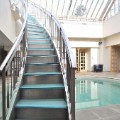
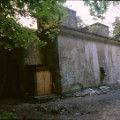


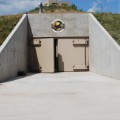
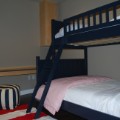
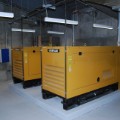
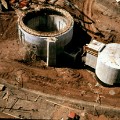
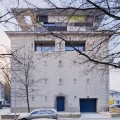



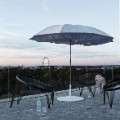

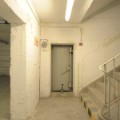

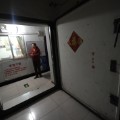
Developers
of community shelters like these often acquire decommissioned military
bunkers and missile silos built by the United States or Soviet
governments -- sites that would cost hundreds of millions of dollars to
build today.
The
fortified structures are designed to withstand a nuclear strike and
come equipped with power systems, water purification systems, blast
valves, and Nuclear-Biological-Chemical (NBC) air filtration.
Most
include food supplies for a year or more, and many have hydroponic
gardens to supplement the rations. The developers also work to create
well-rounded communities with a range of skills necessary for long-term
survival, from doctors to teachers.
Vicino
says Vivos received a flurry of interest in its shelters around the
2016 election from both liberals and conservatives, and completely sold
out of spaces in its community shelters in the past few weeks.
Designer ark
One of those shelters, Vivos xPoint,
is near the Black Hills of South Dakota, and consists of 575 military
bunkers that served as an Army Munitions Depot until 1967.
Presently
being converted into a facility that will accommodate about 5,000
people, the interiors of each bunker are outfitted by the owners at a
cost of between $25,000 to $200,000 each. The price depends on whether
they want a minimalist space or a home with high-end finishes.
The
compound itself will be equipped with all the comforts of a small town,
including a community theater, classrooms, hydroponic gardens, a
medical clinic, a spa and a gym.
For clients looking for something further afield and more luxurious, the company also offers Vivos Europa One, billed as a "modern day Noah's Ark" in a former Cold War-era munitions storage facility in Germany.
The
structure, which was carved out of solid bedrock, offers 34 private
residences, each starting at 2,500 square feet, with the option to add a
second story for a total of 5,000 square feet.
The
units will be delivered empty and each owner will have the space
renovated to suit their own tastes and needs, choosing from options that
include screening rooms, private pools and gyms.
Vicino
compares the individual spaces to underground yachts, and even
recommends that owners commission the same builders and designers that
worked on their actual vessels.
"Most
of these people have high-end yachts, so they already have the
relationship and they know the taste, fit, and finish that they want,"
he explains.
The vast complex
includes a tram system to transport residents throughout the shelter,
where they can visit its restaurants, theater, coffee shops, pool and
game areas.
"We have all the comforts of home, but also the comforts that you expect when you leave your home," Vicino adds.
Nuclear hardened homes
Developer Larry Hall's Survival Condo in Kansas utilizes two abandoned Atlas missile silos built by the US Army Corps of Engineers to house warheads during the early 1960s.
"Our
clients are sold on the unique advantage of having a luxury second home
that also happens to be a nuclear hardened bunker," says Hall, who is
already starting work on a second Survival Condo in another silo on
site.
"This aspect allows our clients to invest in an appreciating asset as opposed to an expense."
The
Survival Condo has several different layouts, from a 900-square-foot
half-floor residence to a two-level, 3,600-square-foot penthouse that
starts at $4.5 million.
Owners
have access to their homes and the facilities at anytime, whether a
disaster is imminent or they just want to get away from it all, and the
complex features a pool, general store, theater, bar and library.
The
condo association sets the rules for the community, and during an
emergency, owners would be required to work four hours a day.
Long-term luxury
If you prefer to spend the end of days solo, or at least with hand-selected family and friends, you may prefer to consider The Oppidum in the Czech Republic, which is being billed as "the largest billionaire bunker in the world."
The
top-secret facility, once a joint project between the former Soviet
Union and Czechoslovakia (now the Czech Republic and Slovakia), was
built over 10 years beginning in 1984.
The
site now includes both an above-ground estate and a 77,000-square-foot
underground component. While the final product will be built out to the
owner's specifications, the initial renderings include an underground
garden, swimming pool, spa, cinema and wine vault.
While
many might see the luxury amenities at these facilities as unnecessary,
the developers argue that these features are critical to survival.
"These shelters are long-term, a year or more," Vicino says. "It had better be comfortable."
























No comments:
Post a Comment